|

TREASURE
ACT 2023 - Treasure enthusiasts and museum visitors are to benefit as the Government changes the legal definition of treasure so that more artefacts can be saved for the nation, the government and Lord Parkinson of Whitley Bay, Arts & Heritage Minister have reported.
The change will mean that more new discoveries go on public display and help deepen people’s understanding of the country’s history.
Under the current definition, newly discovered artefacts can only be legally classified as treasure if they are more than 300 years old and made of precious metal or part of a collection of valuable objects or artefacts.
But to make sure the most significant future discoveries are acquired by museums for the benefit of the nation, the Government is expanding the definition set out in the Treasure Act.
The move has been prompted after a number of recent discoveries fell outside the scope of the Act, including spectacular Roman finds such as the Ryedale Hoard, now at York Museum, and the Birrus Britannicus figurine on display at Chelmsford City Museum. While these artefacts were, thankfully, acquired by museums, this new definition will make it easier for them to do so in the future.
The new criteria will apply to the most exceptional finds over 200 years old – regardless of the type of metal of which they are made – so long as they provide an important insight into the country’s heritage. This includes rare objects, those which provide a special insight into a particular person or event, or those which can shed new light on important regional histories.
Discoveries of treasure meeting these new criteria will be assessed by a coroner and will go through a formal process in which they can be acquired by a museum and go on display to the public.
Arts & Heritage Minister Lord Parkinson of Whitley Bay said, “There has been a huge surge in the number of detectorists – thanks in part to a range of TV programmes – and we want to ensure that new treasure discoveries are protected so everyone can enjoy them.
“Archaeological treasures offer a fascinating window into the history of our nation and the lives of our ancestors.”
Professor Michael Lewis, Head of Portable Antiquities and Treasure at the British Museum,
is quoted as saying:
“The British Museum welcomes the extension of the Treasure Act to ensure museums across the country have the opportunity to acquire more finds of archaeological significance. The reform of the Act will also update its Code of Practice to acknowledge the fundamental role of the Portable Antiquities Scheme (managed by the British Museum in England) in ensuring the successful operation of the Act.”
Historian Dan Snow said, “The search for hidden treasure has captivated us for generations but it is so much more than gold and silver. From ancient rings and coins, to Tudor drinking vessels, every discovery teaches us something new and helps us understand who we are and where we came from.
“Our shared history, and the artefacts that help us tell that story, are for everyone. That is why the treasure process is so important. These changes will have huge benefits for local communities across the country, ensuring more people can see more treasure in our museums.”
Alan Tamblyn, National Council for Metal Detecting, General Secretary, said:
“The National Council for Metal Detecting (NCMD) supports the principle of the new significance category and the increased legal protection it gives to our Nation’s most important new finds. We also welcome the proposed improvements to the smooth running of the Treasure process.”
The Treasure Act 1996 was introduced to enable archaeological discoveries to be acquired by museums. By widening the definition of treasure, the Government aims to improve its ability to preserve important artefacts for the nation.
What happens if you do not report a treasure you have found?
The Treasure Act applies in England, Wales and Northern Ireland. Under the Act, treasure is owned by the Crown when found and a person who finds an object they believe to be treasure must notify the relevant authorities within 14 days.
If a treasure is retained by the Crown and a reward is paid out to the landowner and / or the finder, this reward will be considered a pure gift of cash and there will be no tax consequences on this ex-gratia payment, according to Boodle Hatfield.
“Objects found which are not deemed to be treasure are considered chattels for Capital Gains Tax purposes,” said Boddle Hatfield’s Fred Clark and Sophie Harcourt. “These objects benefit from the chattel exemption meaning that any CGT only applies where the disposal proceeds are more than the current threshold of £6,000.”
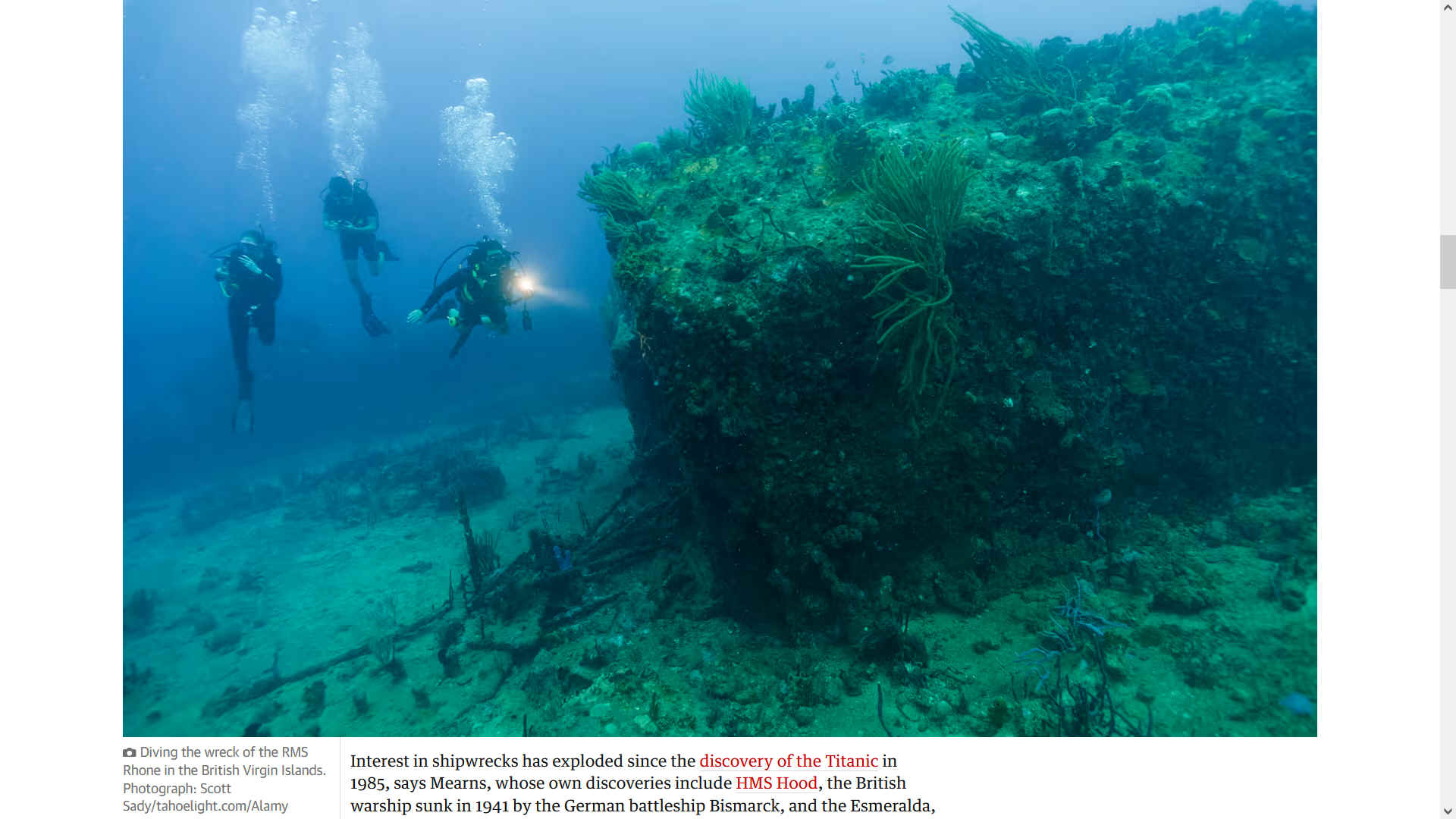
THE GUARDIAN 10 JANUARY 2023 - ALMOST AT WAR: SHIPWRECK HUNTER BATTLE IT OUT FOR SUNKEN TREASURE
hen Ohio shipwreck hunter Thomas “Tommy” Thompson found the wreck of the SS Central America on the bottom of the Atlantic in 1988 he struck gold, literally. He brought to the surface millions in gold bars and coins from the ship, which sank in a hurricane off the coast of South Carolina in 1857.
Over the years, excitement at the discovery of this watery treasure trove soured. Investors, who had helped raise $12.7m to fund the shipwreck hunt, accused Thompson of cheating them out of their share of the proceeds.
After a judge issued a warrant for his arrest in 2012, Thompson went on the run for more than two years, before being tracked down to a Florida hotel room. Still refusing to disclose the location of the coins, he is now about to mark his seventh year in jail for contempt, racking up a daily fine of $1,000.
Thompson’s case paints a complicated picture about shipwreck hunters – a profession both glamourised and reviled. His is a story of alleged crimes, lawsuits and police hunts. But he also uncovered a lost ship’s history; artefacts were displayed and he wrote a book about the process.
Sunken vessels, and the promise of vast treasures within them, have long lured those keen for riches and the glory of discovery. There are more than 3m undiscovered shipwrecks on the ocean floor, only a tiny fraction of which have been explored. But questions over who should ultimately have ownership of this watery heritage – and whether vessels are being explored or exploited – have caused deep divides in the shipwreck world.
“You have two sides of people looking at shipwrecks with different perspectives and motivations, almost at war with each other,” says David Mearns, a marine scientist and one of a handful of professional shipwreck hunters around the world.
On one end of the spectrum, shipwreck hunters like Thompson have helped forge the idea of a group of lawless scavengers, trampling over wrecks to profit from their riches. On the other, maritime archeologists, who explore wrecks as meticulously as crime scene investigators, see shipwrecks as a cultural heritage to protect. Better that a shipwreck stay hidden on the ocean floor than be found for plunder, says maritime archaeologist Chuck Meide. “If the site is discovered by treasure hunters, typically it is essentially destroyed for a short-term profit.”
Interest in shipwrecks has exploded since the discovery of the Titanic in 1985, says Mearns, whose own discoveries include HMS Hood, the British warship sunk in 1941 by the German battleship Bismarck, and the Esmeralda, a Portuguese ship lost in a storm off the coast of Oman in 1503. Advances in technology, including remote-operated vehicles and sonar, have made wreck hunting easier, while the costs of exploring the ocean – in shallower waters at least – have fallen.
The early days of shipwreck fever saw cooperation between hunters and maritime archaeologists, who worked together to find wrecks. But those days are long over, Mearns says. Now questions about who owns the ocean’s sunken vessels frequently spill over into hostility and lawsuits.
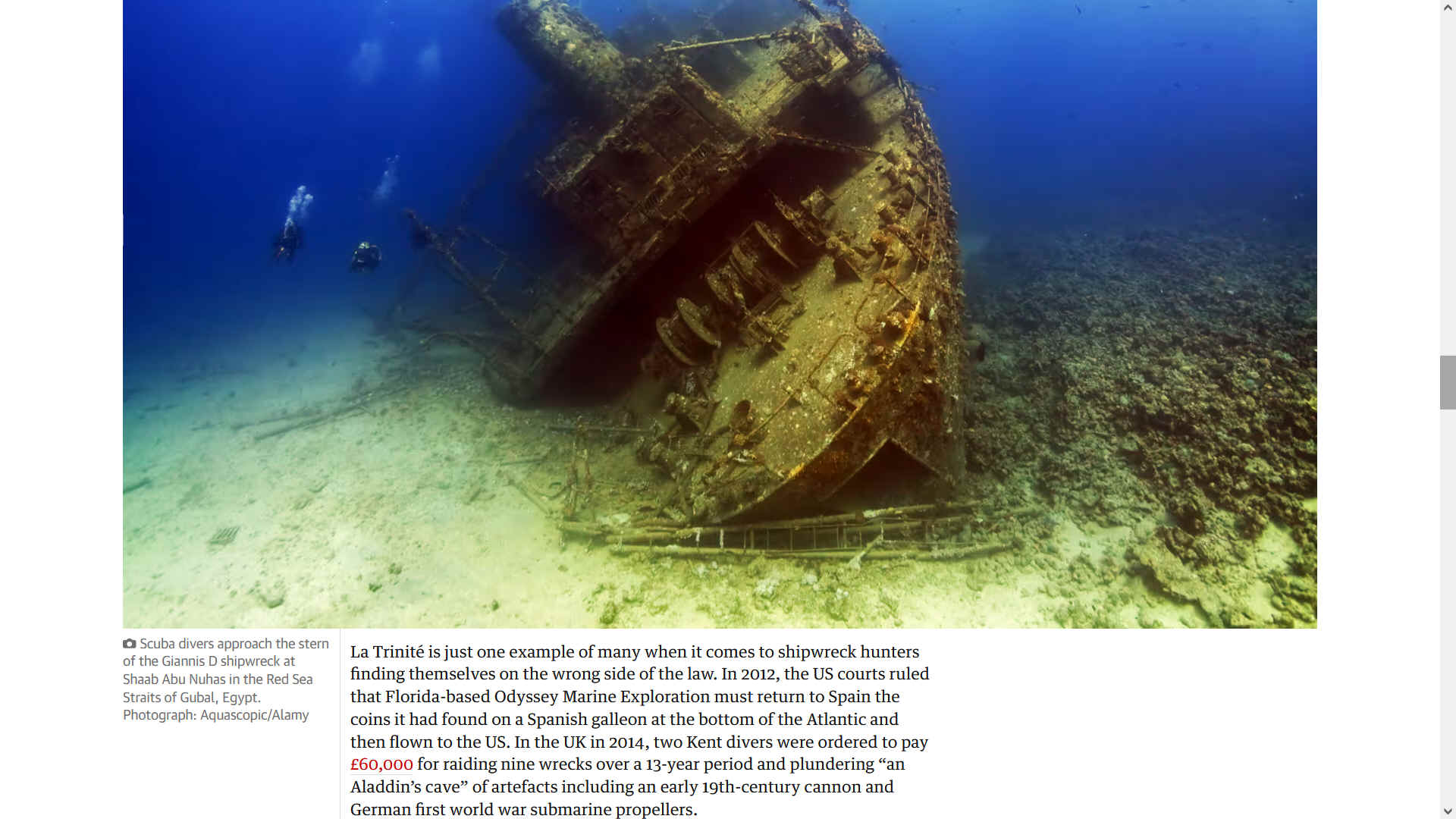
In 2013, Bobby Pritchett, the CEO of the Florida-based Global Marine Exploration, obtained permits to scour the seabed over about 260 sq km off Cape Canaveral. Three years later, he and his crew announced that they had found the remains of a 16th-century vessel.
Many believed it to be La Trinité, a French ship involved in a bitter battle with Spain that sank in the stormy waters off the Florida coast in 1565. Its loss, along with three other ships, proved to be a historic moment, allowing the Spanish to gain a vital foothold in North America.
Pritchett’s discovery kicked off a furious legal battle. Florida and France maintained that the ship belonged to France under a 2004 US law allowing countries rights over their military vessels in perpetuity. Pritchett argued that his find wasn’t La Trinité at all, but a Spanish vessel carrying looted French artefacts.
In 2018, a federal district court ruled in favour of France, leaving Pritchett with no rights to the ship – and the loss of millions in funding from investors who’d been hoping for a share in the ship’s riches. He has now launched an action against France and Florida alleging that they colluded to deprive his company of $12bn in future earnings and shareholder value.
La Trinité is just one example of many when it comes to shipwreck hunters finding themselves on the wrong side of the law. In 2012, the US courts ruled that Florida-based Odyssey Marine Exploration must return to Spain the coins it had found on a Spanish galleon at the bottom of the Atlantic and then flown to the US. In the UK in 2014, two Kent divers were ordered to pay £60,000 for raiding nine wrecks over a 13-year period and plundering “an Aladdin’s cave” of artefacts including an early 19th-century cannon and German first world war submarine propellers.
Criticism of shipwreck hunters’ methods is further inflamed by the fact that wrecks are often watery graveyards. A 2017 Guardian investigation found more than 40 second world war-era ships in south-east Asia’s waters had been damaged by salvage divers seeking valuable metals. Up to 4,500 crew members are estimated to have died when these boats sank. “You may as well just go into a war cemetery and dig it up. It’s no different,” James Hunter, from the Australian National Maritime Museum, told the Guardian at the time.
These sorts of cases help cement shipwreck hunters’ reputations among many maritime archeologists as opportunists at best and desecrators at worst. “A lot of these folks still are just out there to essentially plunder wrecks,” Meide says. “And I can’t find very much redeeming value in that.”
Meide traces his own drive to uncover the history of sunken wrecks to his childhood. Growing up in Atlantic Beach, Florida, his early years were steeped in tales of French and Spanish galleons lost to the seas in this part of the state. “I remember my dad telling me that those Spanish conquistadores could have marched right through our back yard,” he says.
For him shipwrecks are a puzzle to be unravelled by peeling back the layers like an onion, to measure, document and analyse everything, down to the tiniest insect remains or scrap of cloth.
“Most people associate [shipwrecks] with treasures and untold riches, but from the archaeologist’s point of view, it’s the stories,” Meide says. The chance to uncover these is a “one-time event”, he says. If you blast a hole in the ship to get to treasure, that history is destroyed.
But to some hunters, maritime archeologists can end up acting as gatekeepers, sitting on their research for years, even decades, without publishing. “What’s worse,” asks Mearns, “excavating a shipwreck, having all that data and never publishing? Or going out there and salvaging it, selling it on the black market and never telling anybody?”
Mearns believes most hunters are in it for the history and sense of discovery. “It’s a great feeling to find something that’s been lost for so many years – and the material that reveals that was a bunch of dusty papers found in an archive or a private library,” he says. “You’re bringing it to life so people can then see it, experience, relive it, relearn about it.”
It’s this sense of unearthing history that brothers Julian and Lincoln Barnwell say motivated them to conduct one of the most extraordinary shipwreck-finding missions. They spent four years and covered 5,000 nautical miles searching for the Royal Navy warship HMS Gloucester, which sank in 1682 while carrying the future king James Stuart – discovered it and then kept it secret for 15 years.
The Barnwells and their friend James Little found the wreck in 2007 – although it wasn’t until they found the ship’s bell in 2012 that they had proof it was the Gloucester. They told only a few government departments to give authorities time to formally identify the wreck and secure the site.
The Barnwells, who are both avid divers with day jobs running a printing shop in Norfolk, call themselves shipwreck enthusiasts, not hunters. “The term ‘shipwreck hunters’ alludes to treasure hunters and we certainly are not that,” says Julian. The brothers self-financed more than 200 dives to find the wreck. “It’s been like a hobby on steroids,” says Lincoln.
When they finally announced the find in June, experts said it could be the most significant historic shipwreck since the Mary Rose, the Tudor warship raised from the Solent between Portsmouth and the Isle of Wight 40 years ago.
“A ship is a microcosm of a broader world,” says maritime historian Prof Claire Jowitt at the University of East Anglia, who was principal investigator on the Gloucester Project. Artefacts already rescued from the wreck – intact 17th-century wine bottles, a pot filled with ointment and even a urine specimen jar – will teach people more about life on and off the ship, she says.
Despite the deep divisions that persist in the shipwreck world, there is a common thread that runs between hunters like Mearns, enthusiasts like the Barnwells and archaeologists like Meide: a thirst to uncover the secrets at the bottom of the ocean – be that stories, treasures or both. “Shipwrecks are a bug that you catch,” Jowitt says.
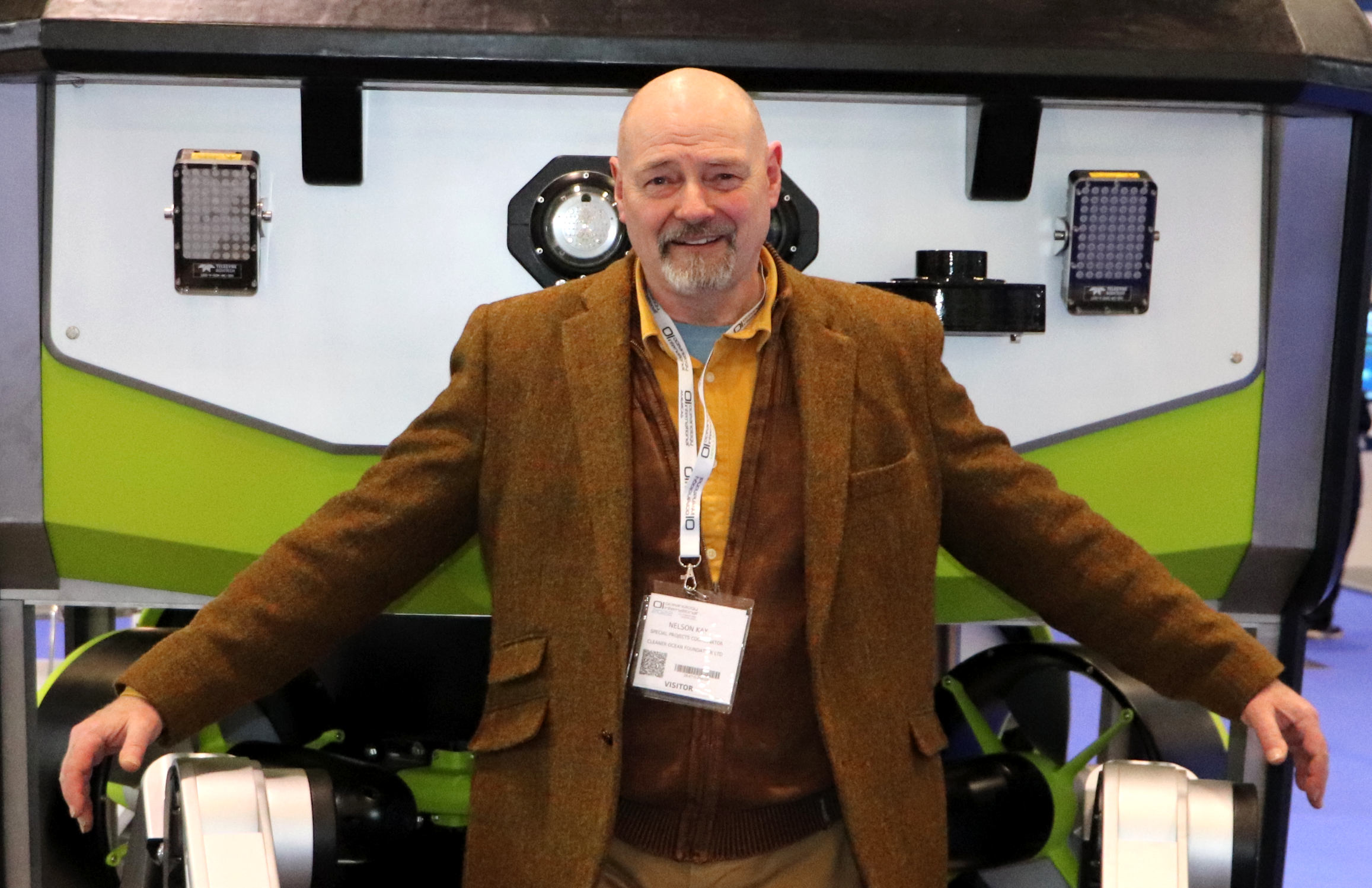
A
Cleaner Ocean Foundation volunteer in London, at the Oceanology
International 2022 event, ExCel. ROVs
from dozens of manufacturers were on display, covering almost every aspect
of marine conservation, surveying and inspection. This one is a ROTV, a
towed vehicle from MacArtney. ROVs can be tethered, battery operated with
a data umbilical, and there is a special modem option, that is under
development. Treasure hunters and archaeologists use ROVs to map sunken
lost civilizations and explore wrecks at the bottom of the ocean.
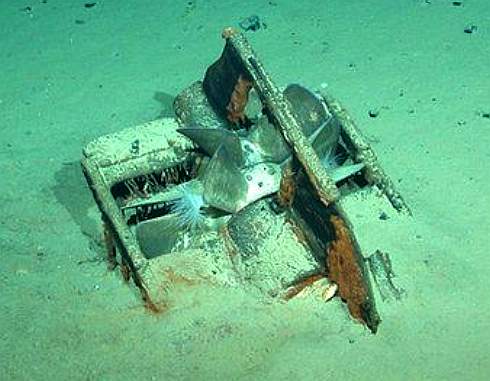
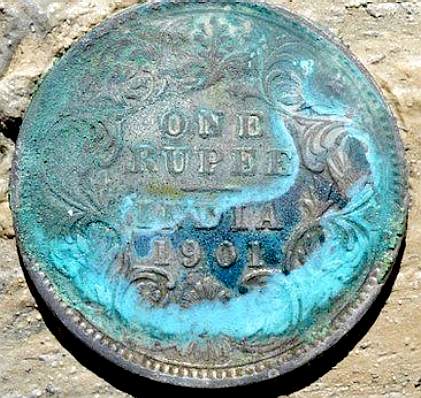
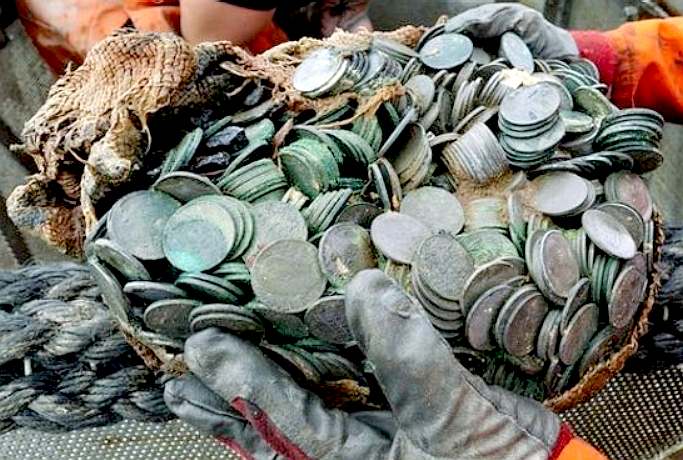
TREASURE
TROVE - WW2 debt caused HM Treasury to call silver reserves from
India, thwarted by a U-Boat torpedo 73 years ago. The UK economy is in
such a bad way today that they are once again calling in all reserves to
bail out a peacetime deficit.
BBC
NEWS APRIL 2015 - RECORD DIVE RESCUES £50 MILLION FROM OCEAN FLOOR
A British-led team has recovered a $50m (£34m; €47m) trove of
silver coins that has lain on the seabed since the steamship carrying it from Bombay to England was sunk in 1942.
The SS City of Cairo was torpedoed 772km (480 miles) south of St Helena by a German U-boat and sank to 5,150m.
The 100 tonnes of coins, recovered in the deepest salvage operation in history, belonged to
HM
Treasury. The silver rupees had been called in by London to help fund the war effort.
But they never made it. The steamship's tall plume of smoke was spotted by a U-boat on 6 November 1942 and it was torpedoed.
Ten minutes later, amid efforts to abandon ship, the City of Cairo was hit with a second
torpedo which sealed its fate.
The ship and its cargo was presumed lost until 2011, when a team led by British salvage expert John Kingsford located an unnatural object among the ridges and canyons of their South Atlantic search area.

GEORGE
OSBORNE - Calling in all reserves, the Chancellor does his best to put
a brave gloss on the present shambles. How about re-commissioning the
privateers Mr Osborne. It worked for the UK in days gone by, because there
was the English
Channel to ward off angry sovereigns whose ships had been plundered.
Under a contract with the UK government, underwater salvagers Deep Ocean Search (DOS) worked for several weeks searching a "jumbled up sea floor" twice the size of London, Mr Kingsford
is quoted as telling the BBC.
"We weren't convinced at first," said Mr Kingsford. "But you have to give your team their head if they say they've found something, so we looked."
The object was indeed the City of Cairo, and the team recovered a "large percentage" of its £34 million treasure chest.
"There was a lot a relief all round," Mr Kingsford said.
The coins have now been melted down in the UK and sold, with the undisclosed sum divided between the treasury - which technically owns the coins - and the salvagers, who take a percentage of the sale.
We wonder if the coins may have been worth more to collectors?
The salvage was completed in September 2013, but DOS has only now been given permission by the Ministry of Transport to announce it.
As well as the coins, the team brought up the propeller belonging to the second, fatal
torpedo.
To be more accurate; propellers. Since there are two contra-rotating
props.
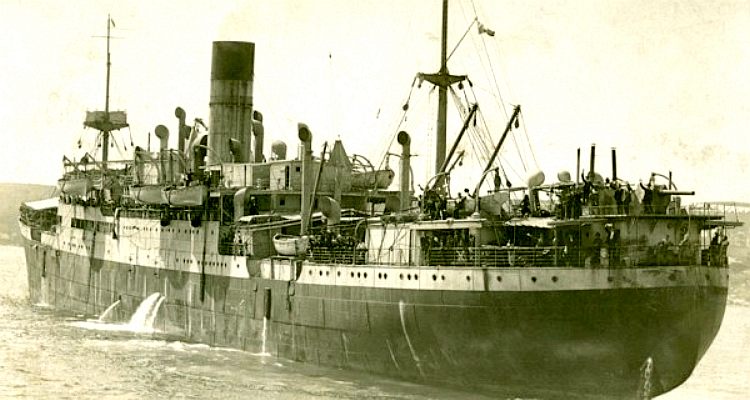
WWII
U-BOAT ATTACK - Shortly after that second torpedo struck 73 years ago, and the last remnants of the City of Cairo disappeared beneath the waves, the
U-boat surfaced and approached the survivors'
lifeboats.
Its captain, Karl-Friedrich Merten, famously directed them to the nearest land and said: "Goodnight. Sorry for sinking you."
Only six of 311 people aboard died in the sinking, but it would be three weeks before anyone found any of the six lifeboats that had set out for land. In that time, 104 of the 305 survivors died.
The British SS Clan Alpine picked up 154 survivors alive on the way to St Helena and a further 47 were rescued by a British merchant ship, the Bendoran, and taken to Cape Town.
A final lifeboat was discovered 51 days after the sinking, off the coast of South America, with only two of its many passengers alive. In a cruel twist of fate, one of the two men, Third Officer James Allister Whyte, died shortly after when the ship taking him home was torpedoed by a U-boat.
After leaving the wreck for the final time, the divers left a plaque in honour of those who died which read:
"We came here with respect." "It was a special salvage," Mr Kingsford
is quoted as saying. "It does mean a lot...It was a very emotive case, where over a hundred people were lost having been in open boats.
"It meant a lot to our team to find this ship and remember it."
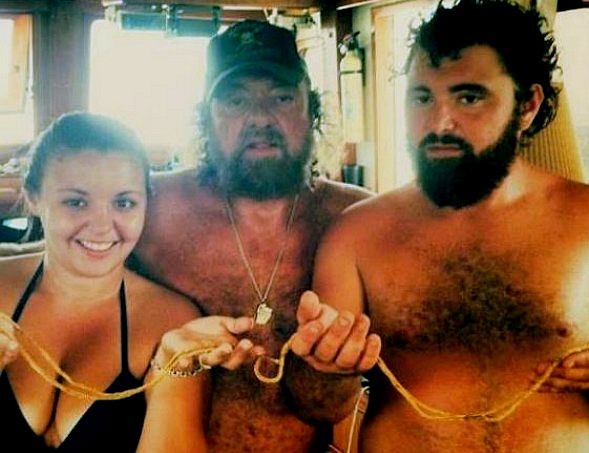
The
Orlando, Florida family who struck gold. You'll pardon us for noticing
that there are a lot of black beards involved in this find which got us
wondering if there might be any connection.
300
YEAR OLD TREASURE FIND -
FLORIDA
JULY 30 2014 - MARINE LINK
A Florida family scavenging for sunken treasure on a shipwreck has found the missing piece of a 300-year-old gold filigree necklace sacred to Spanish priests, officials said on Tuesday.
Eric Schmitt, a professional salvager, was scavenging with his parents when he found the crumpled, square-shaped ornament on a leisure trip to hunt for artifacts in the wreckage of a convoy of 11
ships that sank in 1715 during a
hurricane off central Florida's east coast.
After the discovery last month, a team of Spanish historians realized the piece fit together with another artifact recovered 25 years ago. It formed an accessory called a pyx, worn on a chain around a high priest's neck to carry the communion host. The
dollar value is uncertain.
"It's priceless, unique, one of a kind," said Brent Brisben, operations manager for 1715 Fleet - Queens
Jewels, which owns rights to the wreckage, located in 15-foot (4.5-meter) deep
Atlantic Ocean waters.
Schmitt, who lives near Orlando, last year discovered about $300,000 worth of gold coins and chains from the same wreckage, Brisben said. Schmitt's parents have hunted for sunken treasure as a hobby for a decade.
By law, the treasure will be placed into the custody of the U.S. District Court in South Florida, Brisben said. The state of Florida may take possession of up to 20 percent of the find. The rest will be split evenly between Brisben's company and the Schmitt family.
NBC
NEWS - JULY 2014
Rick, Eric, Lisa, Hillary and Lindsay Schmitt made the discovery last month while scavenging for treasure amid a fleet of Spanish ships ripped apart by a hurricane off of Florida’s east coast in 1715. More than 1,000 people died when the ships sank, but the sunken treasure has remained intact for three centuries.
Rick Schmiitt is quoted as saying to Gabe Gutierrez: “You just never stop being
excited.” “It’s not just the gold — it’s the whole history of the whole thing.”
The family’s latest finds from the 1715 wreckage include a gold filigree necklace considered sacred to Spanish priests. A team of Spanish historians fit the necklace together with another artifact recovered 25 years ago to form a “pyx,” an accessory worn on a chain and used to carry the communion host, Reuters reported.
The latest finds are expected to be worth more than $100,000. They come on the heels of the Schmitt’s discoveries from the wreckage last year: 64 feet of
gold
chains and rare gold coins valued at more than $300,000.
The family of professional salvagers is required to share their findings with 1715 Fleet —
Queens Jewels, the company that owns the salvage rights to this part of the ocean, and to the state of
Florida for museums. But the Schmitts say their efforts are about much more than money.
“I do it for the love, I do it for the accomplishment of finding what other people haven’t found,” Rick Schmitt told NBC News. “It feels wonderful to do it with the family. We’re doing it together.”
Lisa Schmitt
is quoted as saying: “We’ve always felt as though it was the journey, not the destination,” she said. “When I add up the days of my life that I am happiest — you know, other than your wedding and your kids being born — I’d say the rest of them are out here on the water.”
“Some of us are born with a little pirate in our blood.”
SPANISH
TREASURE COAST - JULY 2010 PALM BEACH
Located on the state's Atlantic coast, formed by Indian River, St.
Lucie, and Martin, and Palm Beach counties, this region is well known for its numerous finds of booty which the Spanish Treasure Fleet lost in a 1715 hurricane.
A bounty was discovered inside a 300-year-old bronze cannon that had been handed over to historians for further for study. The cannon was part of a 1715 Spanish shipwreck off the east coast of Florida. The ship was on it's way back to Spain when it sunk during a hurricane. This latest treasure is valued at over $500,000. Treasure hunters said the cannon was an amazing find in it's own right. The cannon was discovered in shallow waters close to shore, approximately twenty miles north of West Palm Beach. It was found near a pile of gold coins. Among the gold coins was an extremely rare 1698 Cuzco mint coin from a Peruvian mine. Historians have struggled for many years to discover more information about the mine, of which very little is known. Other found coins appear to be primarily from
Colombia,
Mexico and
Bolivia.
Ships began wrecking along the Florida
Reef since the early in the 16th century. Spanish ships returning from the New World laden with gold and silver, sailed from South America to catch the Gulf Stream home. Here they passed close to the reefs along the Florida Keys.
Approximately five percent of these ships sunk along Florida's coastline.
In the early 18th century, it was the custom of Spanish ships filled with gold and
silver from South America, to gather on the Florida coast near Sebastian Inlet, on the eastern coast of Florida. Here the captains would wait to form convoys for protection against pirate attacks. In late summer of 1715, late arrivals delayed the formation of the convoy, and it was not until the beginning of the
hurricane season that the eleven ships set sail for home. They were soon hit by a violent hurricane that sank all but one of the ships and scattered their amazing gold and silver treasures on the ocean floor about a half of a mile off shore.
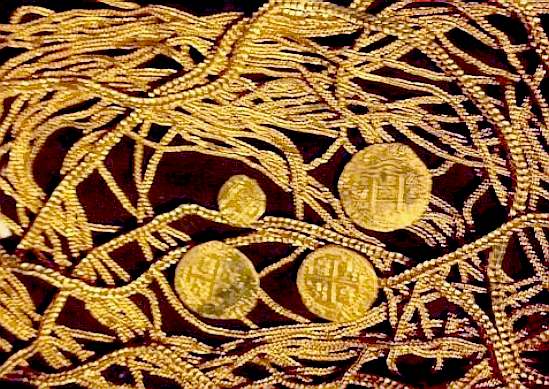
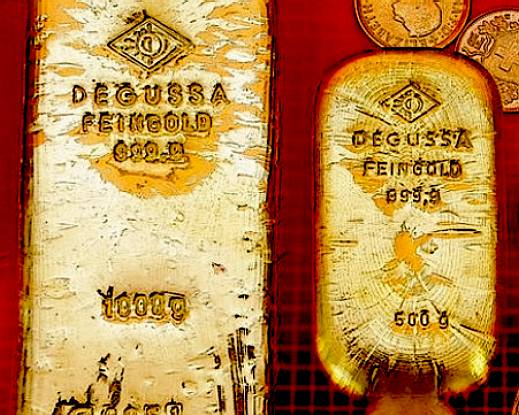
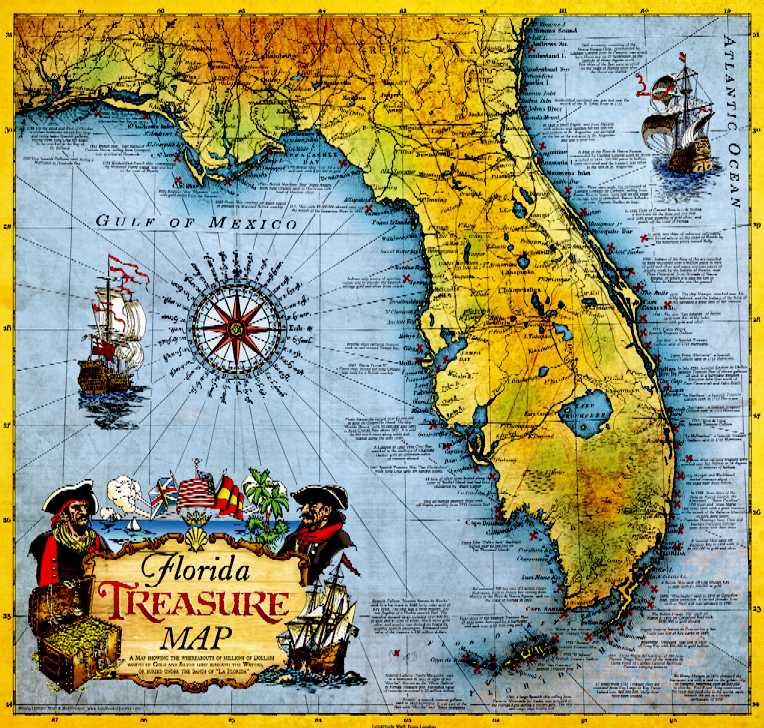
OTHER
TREASURES LOCALLY
Many researchers and historians claim that Florida contains more buried and sunken treasures than any other state. They have also put a price tag on these treasures, which amounts to a cool $165 million (1964).
Florida, like all other states, has a fascinating and romantic history. Seven different flags have flown over her, not to mention the black flag of the pirates. Florida became the haven of many notorious pirates, including
Blackbeard, Lafitte, Gasparilla, Kidd, Rackham, Bowlegs, Bonnett, and possibly
even Morgan himself. They roamed the waters of the Caribbean Sea, and captured every ship in sight. Often, they brought their loot back to Florida, and buried it on some lonely shore. When they finally died, the location of their hidden wealth died with them. The majority of all buried treasure in Florida is the work of
pirates.
The Everglades - During the
Civil War in 1865, Captain John Riley and his squad of Confederate troops were sent from Kentucky with a half ton of gold bullion to be transported to Fort Mead, Florida. They were nearly overtaken by Union troops advancing, so the Confederate band quickly buried the gold and escaped into the swamps of the Everglades. When it came to reclaim it, of course, no one could remember exactly where they put it. The gold may stay there a long time: digging in the Everglades, now a Federally protected area, is forbidden.
Caesar's Rock - The treasure of "Black Caesar" is supposedly located here, as well as on Sanibel Island. Black Caesar's full real name was either Henri Caesar or Caesar LeGrand, depending on which historian you ask. He was originally either from Haiti or from Dominica, also depending on which historian is speaking. Reportedly he entered the solo pirate business by killing the captain of a ship he was a mate on, then became a privateer for the next 28 years.
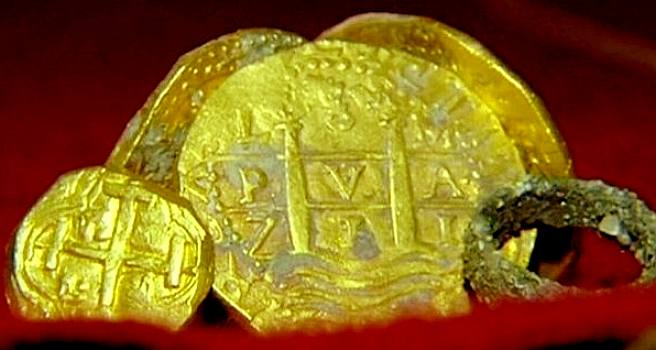
May
2014 - $1.3m Gold Recovered From 1857 Shipwreck
A deep-ocean exploration company in Florida says it has recovered nearly 1,000 ounces of gold, worth $1.3 million at current gold prices, on a reconnaissance dive to an historic Atlantic Ocean shipwreck.
The dive confirmed that the ship had not been disturbed since 1991 when another company stopped recovery work, Tampa-based Odyssey Marine Exploration, announced on Monday. The ship's sinking in 1857 with 21 tons of gold aboard in a
hurricane off the coast of South Carolina sparked a U.S. banking panic.
Recovered gold included five gold ingots and two $20 Double
Eagle coins, an 1857 coin minted in San Francisco and an 1850 coin minted in Philadelphia. The gold ingots were stamped with the manufacturer's "assay-mark" and weigh from 96.5 to 313.5 troy ounces.
U.S. $20 Double Eagle coins fetch an average of $5,000 from collectors, Odyssey's chief operating officer Mark Gordon told Reuters last week.
In March, Odyssey won the rights to return to the shipwreck from a receiver who had been appointed by an Ohio court to represent the ship's first exploration company after a decades-long court battle over rights to the treasure and return for investors
More than $40 million in gold was recovered by the original team led by Tommy Thompson, an Ohio engineer who discovered the shipwreck in 1988 using sonar and robotic technology he developed. The recovery efforts were derailed by lawsuits and investors accused him of failing to pay them. He has been considered a fugitive since 2012 when he failed to appear in court for a hearing.
Only about 5 percent of the shipwreck site was explored in the late 1980s, Gordon said.
The two-hour reconnaissance dive in mid-April took place as the company's research vessel, Odyssey Explorer, was traveling from the U.K. to Charleston, the company revealed on Monday.
Odyssey Explorer left Charleston recently to begin the bulk of recovery work at the shipwreck 160 miles off the South Carolina coast and 7,500 feet (2.2 kilometers) deep.
The 280-foot (85 meters) side-wheel steamship carried as much as 21 tons of gold ingots, freshly minted gold coins and raw gold from the California mines, as well as the personal wealth and belongings of its 477 passengers, most of whom were lost when the ship sank.
Historians say the loss of the gold caused a banking panic that contributed to a larger U.S. economic crisis, called the Panic of 1857, that lasted several years.
Academic Treasure Hunters Gain Third Site
- Thursday, February 14, 2013
Seafarer Exploration Corp has finalized an agreement with Heartland Treasure Quest LLC (HTQ) for a third treasure site.
The company is focused on the archaeologically-sensitive exploration, documentation and recovery of historic shipwrecks with an emphasis on recovering treasure and understanding and documenting historical events surrounding shipwrecks.
HTQ has surveyed, explored, and researched the site and historical archives for over a decade. Seafarer will now start the application process for another salvage permit.
Kyle Kennedy , CEO of Seafarer, stated, "We are continuing our plans of expansion to build shareholder value and increase our probabilities of success. We want to continue to emphasize the academic importance of excellent archaeology and reporting with the projects we have been given the responsibility to complete. And, in line with that, we wish to thank the archaeologists and biologists at HTQ for their commitment to professional standards. Seafarer and the Florida Bureau of Archaeological Research are committed to the very highest professional archaeological standards. Seafarer is now in the research stage for future wreck sites number 4 and 5."
Thomas Funk , Project Archaeologist, commented "We are happy to be partnered with Seafarer, a company that has continually demonstrated a commitment to historical documentation and achieving the highest environmental standards and archaeological conservation of our state history."
The principal business of Seafarer is to develop the infrastructure necessary to engage in the archaeologically-sensitive exploration, documentation, and recovery of historic shipwrecks. The company has primarily focused on efforts to locate and recover artifacts and cargo from what is believed to be a sunken Spanish ship off the coast of Juno Beach, Florida. Management believes that if artifacts and cargo are recovered, a portion of the recovered items will be in the form of treasure such as dated coins, gold and silver bullion, and emeralds. Additionally, the company says it has also been mapping and surveying their second site off of Lantana Beach, Florida, with positive results.
ODYSSEY
SUPREME COURT APPEAL - TAMPA - 15 May 2012
The U.S. Supreme Court has again steered clear of an international dispute over a half-billion dollars in gold and silver that a local salvage company discovered and brought from the ocean floor to Tampa.
The justices on Monday rejected appeals from Odyssey Marine Exploration, the deep-sea exploration company that found the wreck of a sunken Spanish galleon, and Peru, both of which objected to court rulings awarding the treasure to Spain.
In February, Spain took possession of 17 tons of silver coins and other artifacts estimated in 2007 to be worth $500
million.
Odyssey Marine Exploration has lost every round in federal court in its effort to hold on to the treasure it found when it discovered the wreck, believed to be the Nuestra Senora de las Mercedes, off Portugal's Atlantic coast near the Straits of Gibraltar. The ship was sunk in 1804.
Monday's ruling is the latest in a series of legal defeats for Odyssey Marine.
The dispute with Spain started almost the moment Odyssey located a wreck it code-named the "Black Swan" off the Straits of Gibraltar in the summer of 2007 and shipped hundreds of buckets of coins from the seafloor to a secure warehouse in Florida.
Spanish authorities have based their legal arguments on the ship's status as a military vessel, which was sunk by the British while hauling treasure from Peru to Spain, thus making it the rightful property of the Spanish government. A federal magistrate and federal judge in Tampa along with the U.S. Court of Appeals in Atlanta all agreed.
The courts ordered Odyssey to give the treasure back to Spain, which sent military transport planes to Tampa in February to retrieve it.
Our
advice to Mr Stemm is to invoke the law of finders keepers. Firstly, don't
bother looking for treasure in sovereign waters. Only look in
international waters. When and if he finds any more treasure by this
method. Raise it and keep is a secret haul for six years, after which he
can auction it legally claiming title and so avoid the clutches of greedy
officials too sloth to hunt for the treasure themselves.
In
circumstances where territorial waters are involved, there should be an
international law rewarding responsible treasure hunters with at least 50%
of any recover artifacts. History tells us that it is pointless doing a
deal with a state, which, once they know the location of any wreck,
typically breaks all contracts on the slightest pretext. The writer has
done deal with local authorities, stamped by Courts as Orders, and still
the local authority has breached the Order. Sad, but true - and that is
how revolutions begin.
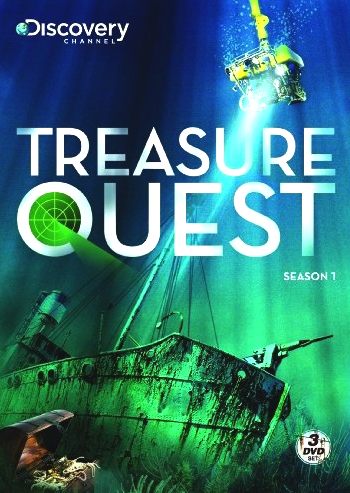
ODYSSEY
MARINE EXPLORATION
Odyssey Marine Exploration, Inc. is an American company engaged in the salvage of deep-water shipwrecks. Odyssey salvaged the US Civil War era shipwreck of the SS Republic in 2003 and recovered over 50,000 coins and 14,000 artifacts from the site nearly 1,700 feet deep. Odyssey has several shipwreck projects in various stages of development around the world, including the codenamed Black Swan Project.
HMS SUSSEX
Between 1998 and 2001, Odyssey Marine Exploration searched for HMS Sussex and now believes that it has located the shipwreck off Gibraltar at a depth of 821 metres. The ship sank in a storm in 1694 during the War of the Grand Alliance as it was transporting 10 tons of gold coins to buy the allegiance of the Duke of Savoy, Victor Amadeus II, against
France.
In September 2002, Odyssey reached an agreement with the British government on a formula for sharing any potential spoils, under which Odyssey would get 80 percent of the proceeds up to $45 million, 50 percent from $45 million to $500 million and 40 percent above $500 million. The British government would get the rest.
The company was poised to start the excavation in the late summer of 2003, according to the approved project plan and engaged Gifford and Partners to assist with archaeological aspects, but the project was delayed when Odyssey discovered and began excavating the SS
Republic which continued until early 2003. The Sussex agreement was criticized by some archaeological organizations and charities, including the Council for British Archaeology, Rescue, and the Institute of Field Archaeologists, denouncing it as a dangerous precedent for the "ransacking" of shipwrecks by private firms under the aegis of archaeological research. An early day motion was signed by 60 British MPs condemning the treasure hunting.
In December 2005 Odyssey began archaeological investigation of the site believed to be HMS Sussex. The Company adhered to the stringent project plan submitted and accepted by the Sussex Archaeological Executive, a committee of archaeological consultants approved by the UK Government. To date, Odyssey has completed Phase 1A (the non-disturbance survey) and a substantial portion of Phase 1B (trial excavation of the site believed to be HMS Sussex) to the satisfaction of the UK Government. Odyssey is authorized by HMG to complete phase 1B of the project.
Before Odyssey could complete Phase 1B of the Sussex project plan, it was stopped by the Spanish authorities, in particular the Junta of Andalusia in January 2006. In early June 2006, Odyssey provided clarification on all points to the Kingdom of Spain's Ministry of Foreign Affairs through the offices of the embassy of the United Kingdom. Odyssey is awaiting final comments on the plan before resuming operations on the shipwreck believed to be that of the Sussex.
In March 2007, Andalusia gave its assent for the excavation to start with the condition that Spanish archeologists take part in order to ascertain that the shipwreck to be excavated is indeed the Sussex and not a Spanish
galleon. While waiting for Andalucia to appoint an archaeologist to participate in the Sussex expedition, the company began operations on the "Black Swan" salvage and since then, Spain has rescinded all cooperation with the company.
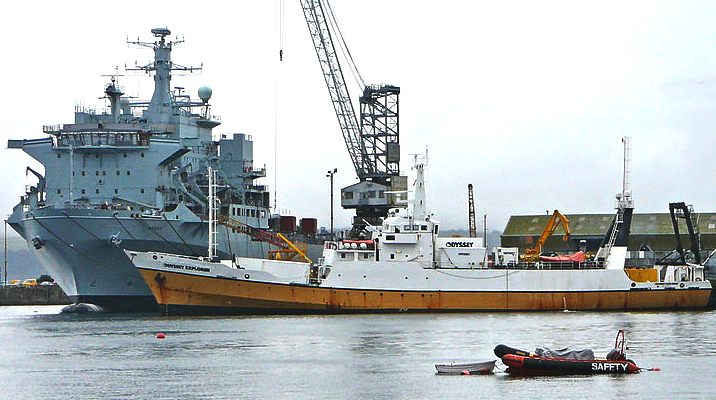
Falmouth:
Odyssey Explorer in 2009
BLACK SWAN PROJECT
Wikinews has related news: 500 million US dollars worth of treasure found off coast of Cornwall UK
In May 2007, the company salvaged 17 tons of mainly silver and some
gold coins from a wreck believed to be the Spanish frigate Nuestra Señora de las Mercedes, which blew up and sank in the Action of 5 October 1804.
Following the discovery, Odyssey brought the coins and artifacts recovered into the jurisdiction of the US Federal Court by filing an admiralty arrest pursuant to admiralty law. At that time, the Spanish government claimed that they believed the site was in Spanish territorial
waters. The Spanish Government has since conceded that claim and are now seeking to claim the discovered treasure based on their belief that the Nuestra Senora de las Mercedes should be afforded sovereign immunity.
On July 12, 2007, the Civil Guard seized the Odyssey Marine Exploration research vessel Ocean Alert 3.5 nautical miles (6 km) off the European coast. The Spanish Civil Guard claims to be responsible for customs control and European Union borders in this region, under the EU Schengen Agreement. This however, is disputed by the Government of
Gibraltar and the UK Government who claim that the ship was detained in international waters near Gibraltar and that Spain therefore had no legal authority to board the vessel without the express consent of the flag state of the ship - in this case Panama. The Gibraltar Government stated that although this was a matter for the Government of Panama, they are "concerned that international shipping using Gibraltar port should be interfered with in this way in international waters."
The ship was ordered to sail to the Spanish port of Algeciras to undergo a search and inspection. Issues include the value and cultural significance of the shipwreck and the disputed status of Gibraltar between the UK and Spain. Panama is also involved because Odyssey's vessel is flagged there.
After a five-year court battle, a U.S. federal judge awarded the treasure to Spain in February 2012 and ordered Odyssey Marine to relinquish the treasure to Spanish authorities. Spain's culture minister indicated the treasure will be divided among several national museums.
DISCOVERY CHANNEL TREASURE QUEST
Odyssey Marine Exploration's searches, particularly those in the English
Channel, are the subject of the Discovery Channel program, Treasure Quest.
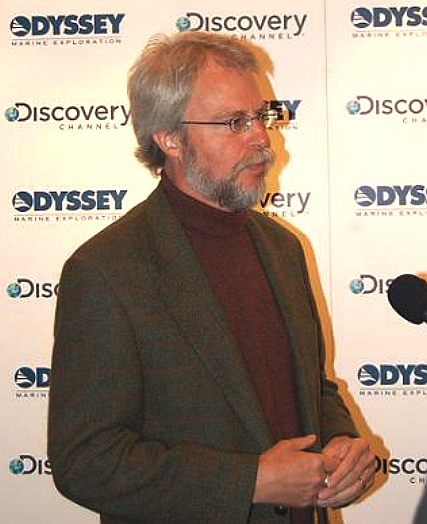
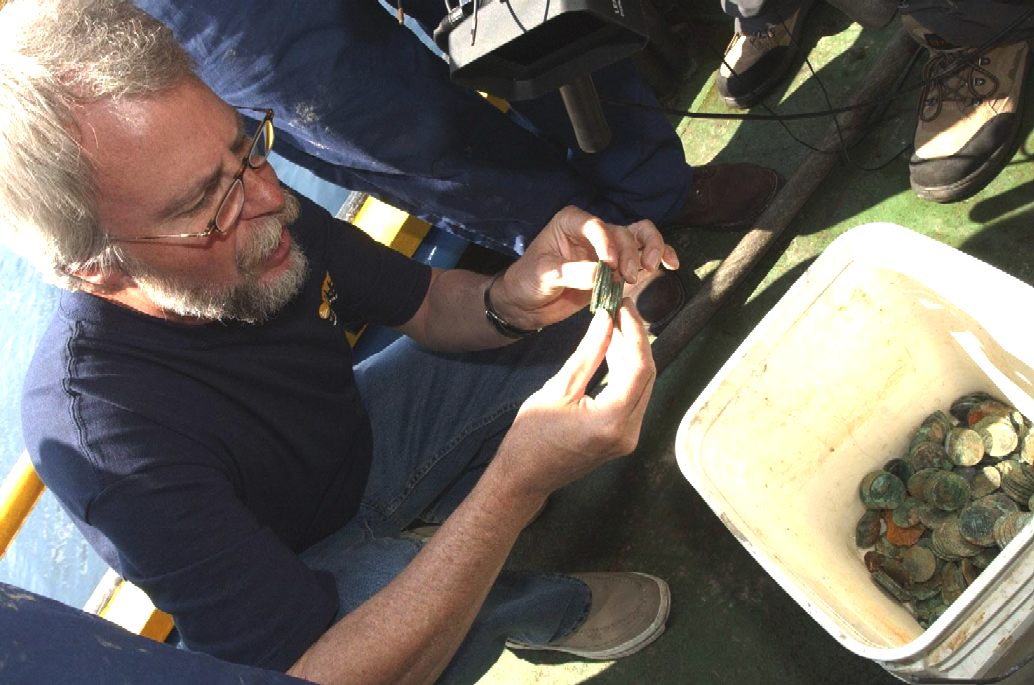
Gregg
Stemm and the Spanish treasure trove from the Black Swan - Odyssey Marine Exploration
LINKS
ADVENTURE
GALLEY - Captain Kidd
HANNEKE
WROMEN - 1468 gold coins
HMS
SUSSEX -
HMS
VICTORY - Horatio
Nelson
Castaways
condos treasure history
Florida
Zone Blog Spot buried treasure
Born
Rich Rick Schmitt and family find spanish treasure
BBC
news 300 year old Spanish treasure discovered
BBC
news africa
wartime silver treasure recovered atlantic
The
Terramar Project daily news
record-dive-retrieves-50m-in-silver-from-ss-city-of-cairo
https://www.theguardian.com/environment/2023/jan/10/almost-at-war-shipwreck-hunters-battle-it-out-for-sunken-treasure
https://www.coronersociety.org.uk/coroners/
http://finds.org.uk/treasure/advice/summary
https://www.gov.uk/government/people/lord-parkinson-of-whitley-bay
https://www.theguardian.com/environment/2023/jan/10/almost-at-war-shipwreck-hunters-battle-it-out-for-sunken-treasure
https://www.coronersociety.org.uk/coroners/
http://finds.org.uk/treasure/advice/summary
https://www.gov.uk/government/people/lord-parkinson-of-whitley-bay
http://theterramarproject.org/thedailycatch/record-dive-retrieves-50m-in-silver-from-ss-city-of-cairo/
http://www.bbc.co.uk/news/world-africa-32316599
http://www.castawayscondos.com/history.php
http://floridazone.blogspot.co.uk/2013/09/buried-treasure.html
http://www.bornrich.com/rick-schmitt-and-family-find-spanish-treasure.html
http://www.bbc.co.uk/newsround/23955592
http://www.maritimeprofessional.com/News/351646.aspx
support@maritimeprofessional.com
http://www.treasurenet.com/forums/shipwrecks/1062-heartland-treasure-quest.html
http://www.marinelink.com/news/academic-treasure-hunters351646.aspx
http://www2.tbo.com/news/breaking-news/2012/mayus-supreme-court-rejects-appeal-odyss
fhttp://www.marinetechnologynews.com/news/recovered-shipwreck-491486

ELIZABETH
SWAN - Perhaps
the
ultimate Robot Treasure Hunter, a Bluefish ZCC marine exploration platform
could be the answer to a treasure hunters prayer. Such ship designs use
a patent
advanced active
hull to provide ultimate autonomy for underwater archaeological exploration.
The above vessel is a proof of concept boat for an ocean cleaning vacuum
cleaner that shares some of the technology, as in solar wings and wind
turbines.
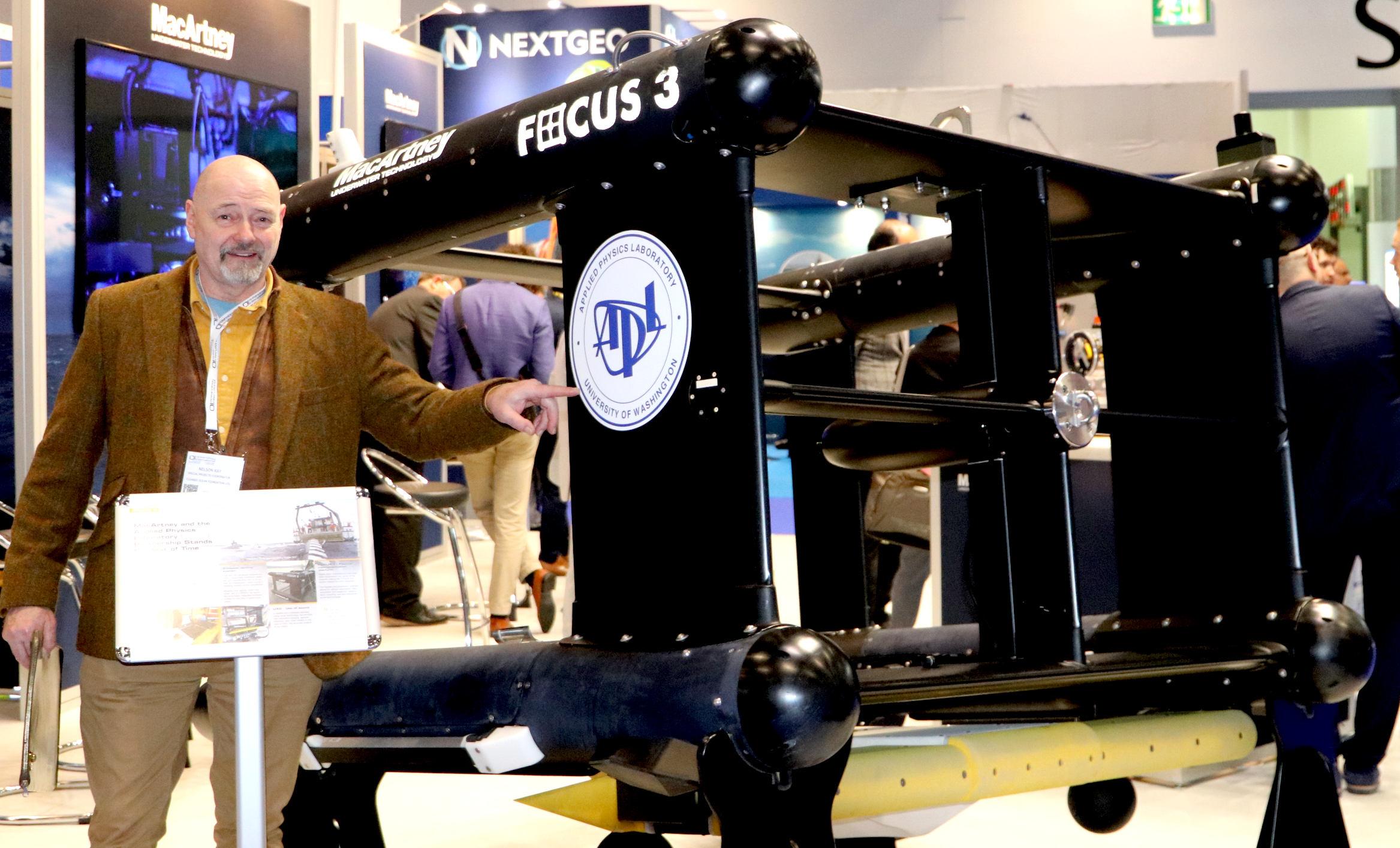
ATLANTIS -
MEDITERRANEAN SEA
ATLIT-YAM -
ISRAEL
BAIA -
ITALY
DWARKA -
INDIA
PAVLOPETRI -
GREECE
PHANAGORIA -
BLACK SEA
PORT
ROYAL - JAMAICA
RUNGHOLT -
DENMARK
THONIS-HERACLEION
AND ALEXANDRIA - EGYPT
YONAGUNI
JIMA - JAPAN
ACIDIFICATION
- ADRIATIC - ARCTIC
- ATLANTIC - BALTIC
- BERING - CARIBBEAN
- CORAL - EAST
CHINA
ENGLISH
CH - GOC - GULF MEXICO - INDIAN
- MEDITERRANEAN - NORTH
SEA - PACIFIC - PERSIAN
GULF - SEA JAPAN
STH
CHINA - PLASTIC
- PLANKTON - PLASTIC
OCEANS - SEA
LEVEL RISE - UNCLOS
- UNEP
- WOC
- WWF
|

















